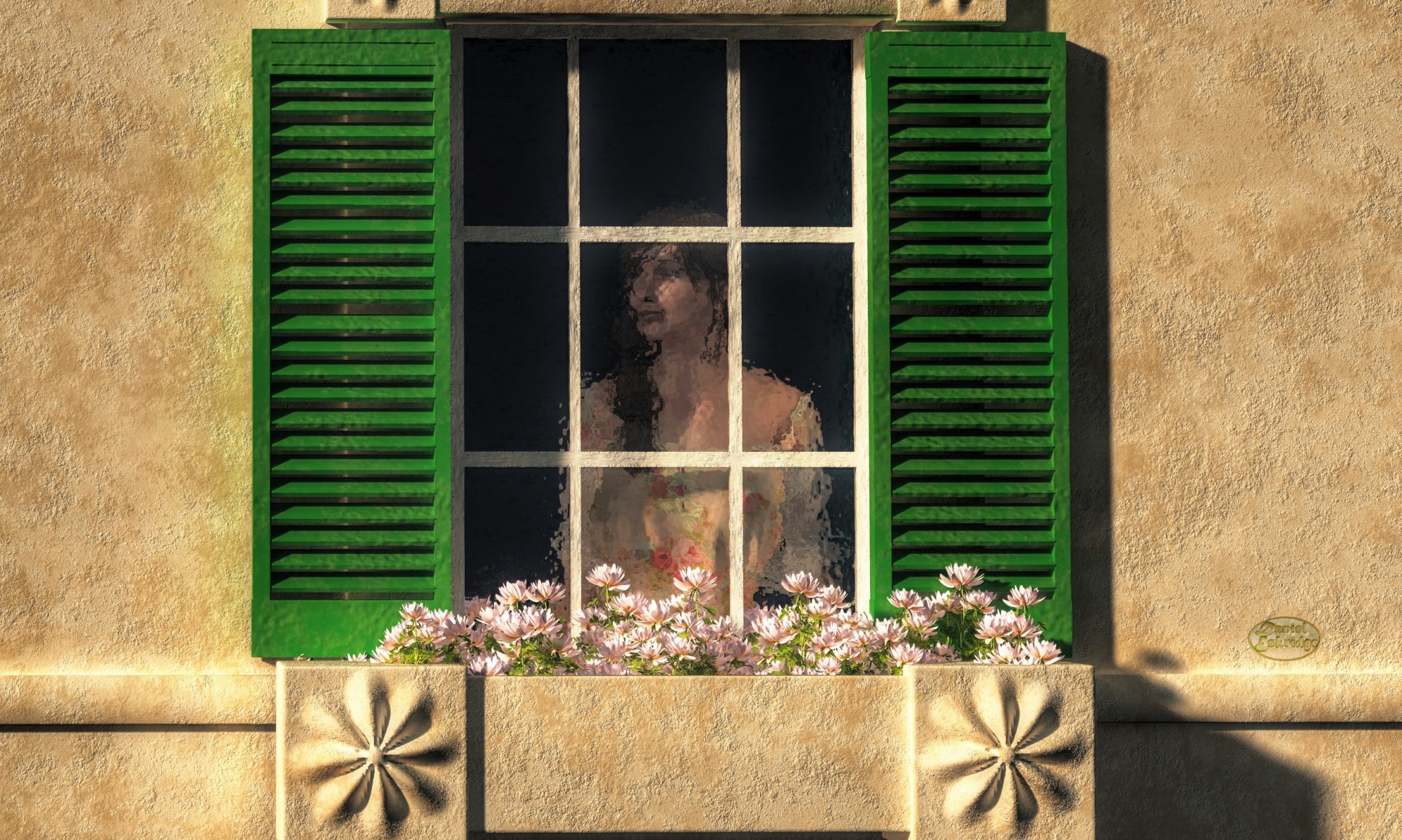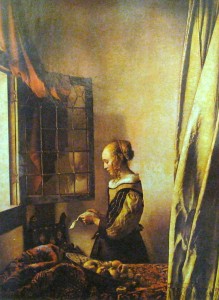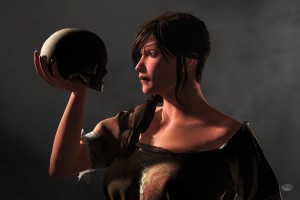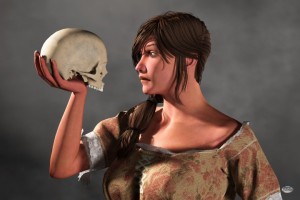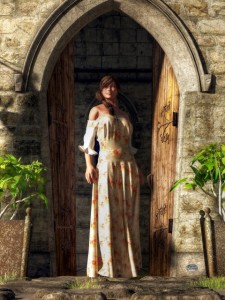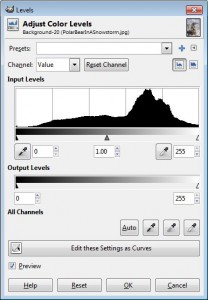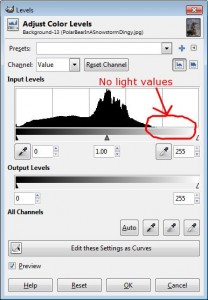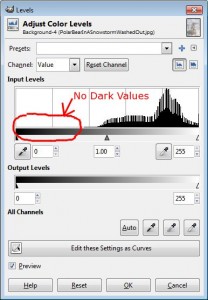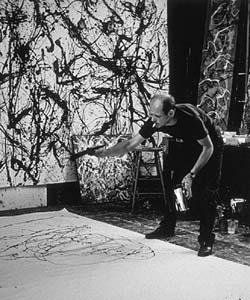Do you want to know a neat way to influence the minds of your audience? Do you want to create art that affects the people looking at so that it makes them happy, or feel sad, or awestruck. Of course there are many ways to affect the psychology of your viewers, but one particularly subtle method and the subject of my article today is the view angle.
What is the View Angle?
The view angle goes by a few names. In photography and cinematography, it is generally called “camera angle”. It drawing and painting, you might hear it as the “point-of-view”, “perspective”, or “horizon line”. Basically, it defines how the viewer looks into the scene. Are they looking down at the subject, up at it, or level with it? Of course for purely abstract work, this doesn’t apply, but for most scenes you can use this to indicate the emotion that the viewer should experience when seeing it.
High Angle
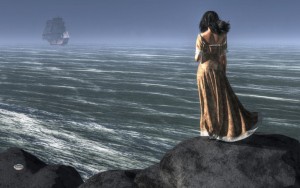
In this image, I used a high angle to give the woman a sense of sadness as the ship sails away. The horizon being high in the composition also increases the sense of distance between the woman and the ship.
The psychological effect of this point of view is generally one that elicits darker feelings in the viewer: depression, sadness, loss. Because this angle indicates that the viewer is above the subject, it also gives them a slight sense of superiority even possibly allowing you to elicit sympathy from your audience. For instance, images depicting the death of a hero, innocent, victim, or any other type of character that the audience should like tend to use this angle of view.
The high angle of view can also increase the sense of time in a scene. In outdoor scenes, the eye has to travel further from the bottom to reach the horizon. In other words, the sense of distance in a scene is increased. Also, viewers tend to perceive objects intended to be in motion as heavier and moving more slowly.
Low Angle
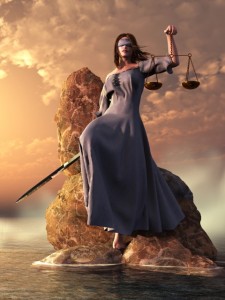
In this image, I wanted to make Themis, the embodyment of justice, seem heroic. So I depicted her from a low angle.
Low angle scenes tend to be happier in theme. In outdoor scenes, the sky dominates and introduces a great deal more light into the image. As the angle increases, subjects can start to give off a heroic sense even awe. The viewer tends to be inferior to the subject. This psychological effect is one of the reasons why kings and rulers sat on elevated platforms throughout history. Taken to the extreme though, you can give your viewers a sense of fear as a subject looms over theme.
Also, from this point of view, objects meant to be in motion tend to appear to be moving faster, and they might be perceived to be lighter in weight.
The Dutch Angle
The Dutch Angle, or the dutch tilt, is a more unique angle. It is accomplished by tilting the scene. In the real world, we don’t tend to experience it as our brain compensates for any tilt of the head, but in art, you notice it because the tilt conflicts with the level lines of the top and bottom of the frame. In a way, the Dutch angle sort of combines both the low and high angle. The horizon now travels diagonally across the scene. The effect on the viewer is to instill a sense of unease and unbalance. This is a favorite of horror scenes, but can also be used to make an action scene feel more chaotic.
You should be careful of using the Dutch angle too much. Viewers sometimes catch it as an attempt to manipulate them, and that destroys the intended effect. For instance, I’ve seen lots of movie reviews poking fun of director Michael Bay for overusing it in his action movies. Instead of instilling a sense of unease, the it creates unintentional comedy.
Being aware of and using the view angle in your art is definitely something you should look into as an artist. However, keep in mind that the contribution of view angle to an artwork is generally not that extreme. Its effect is subtle, and it is something probably better used in combination with other visual cues to influence your audience, such as framing and lighting. However, I find it to be another useful tool to consider when putting a scene together.
Regards,
Daniel
P.S. If you liked this article, please consider signing up for my newsletter. I send it out every Wednesday and it includes links to my latest artworks, articles, and videos, as well as discounts, deals, and freebies!
